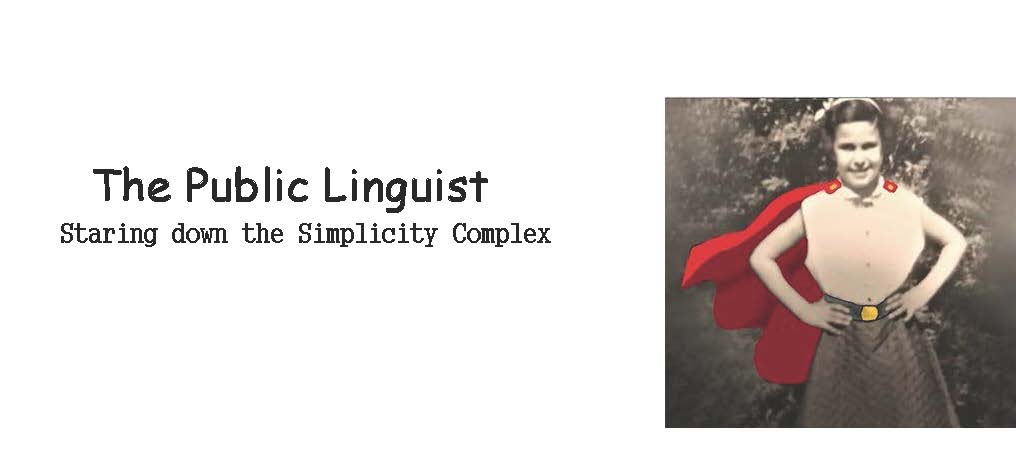Allow me to frame the following critique by quoting what my ex (lovingly) used to say to me:
“You have a problem for every solution”
But, I digress,
Like most health communication people I've spent this year thinking about, writing about and re-imaging how we could have done better communicating the Covid pandemic to various "general publics". I'm part of a large group of people who share what they come across.
Lately I've been on the hunt for messaging explaining mRNA and the Covid vaccine.
Friend Diane sent the very cool animated video produced by Johns Hopkins, "How Do mRNA Vaccines Work? Here's What You Should Know."
First listen through, driving in my car, I loved it.
But living up to my Ex's characterization of me - I had to dig deeper, listen a few times more.
Here's where I think the general public would get hung up, or simply skip over important information need understand and have more trust in the new Covid vaccine:
The video is good for listeners who have some good basic concepts about science – science literacy. (20-30%) of adults in the US. If you're interested in data on public understanding and perception of science see references below).
NSF's decades-long Public Understanding of Science surveys consistently show that US adults are not very science attentive or science literate.
Examples -about 50% of US adults incorrectly believe that "antibiotics kill viruses as well as bacteria." And in another example, roughly 1/2 of adults agree that "the earliest humans lived at the same time as the dinosaurs.
No blame game here. But if we factually know that science likely does not play a central role in millions of people's identity and interest, if their science literacy is limited, then it is our responsibility to produce information that is understandable, teaches and advances science literacy.
That's why I listened much more carefully to the Johns Hopkins video. They're very smart people who know their science, and are committed to producing accurate and trustworthy information.
I've listed the "high barrier" messages for your consideration. I think these trouble spots are very fixable with little effort.
Overall – I would have capitalized on “you might have heard…but the fact is that …….They don’t do this until the Question Section.
1. (re mRNA) in development for 20 years
Linguistically/ comprehension wise, something like "Scientists have been working on MRNA for 20 years. They learned a lot about how useful mRNA could be in vaccines."
2. "Unlike some vaccines…..mRNA vaccines do not contain any pieces of the virus."
Much more understandable to say something like, “the MRNA vaccine is different from most vaccines that people take. Most vaccines start by taking pieces of the virus…..For example when you take the flu vaccine tiny amounts of the real virus go into your body…..
3. The spike protein…..triggering an immune response.
This science inaccessible to most
Better to say something like, "The body thinks this is a real virus invading and starts protecting and fighting….."
4. They help our bodies produce antibodies specific to the virus.
Way to high barrier science concept. Need to unpack this. What do antibodies do?
5. ….T cells that also confer immunity.
Silly misstep - “confer” college level word
6 Producing the same immune response that happens in a natural infection, but without actually infecting your body.
Again, good script but not written with the 70-80% of the adults in the US.
If you don’t know what an immune response is ( more or less) you probably are still likely to think that you will get sick from the vaccine.
It's clearer to say something like “….without actually infecting your body with the Covod virus and making you sick. “ or "But the mRNA vaccine doesn't GIVE YOU the Covid virus. You do not get Covid from the vaccine."
Again this comes up in Q section. Would have bring great to say it here and repeat in Q.
My favorite “high barrier” message in the Qs is:
“Affect or interact with your DNA ….their evidence is that the MRNA never actually enters the nucleus of the cell ( less that 20% of adult in US know anything about a cell and / DNA. “
Other than that Mrs. Lincoln, did you like the play?
References - Public attitudes and understanding of science:
National Science Board. Science and Engineering Indicators, 2012. Arlington, VA: National Science Foundation; 2012. Science and technology: Public attitudes and public understanding; pp. 7.1–7.51. Ch. 7.
National Research Council. Trust and Confidence at the Interfaces of the Life Sciences and Society: Does the Public Trust Science? A Workshop Summary. Washington, DC: The National Academies Press; 2015. Board on Life Sciences, Division on Earth and Life Studies; Board on Science Education, Division of Behavioral and Social Sciences and Education. [PubMed]
Bauer MW, Falade BA. Public understanding of science: Survey research around the world. In: Bucchi M, Trench B, editors. Routledge Handbook of Public Communication of Science and Technology. 2nd ed. New York: Routledge; 2014. pp. 140–159.




No comments:
Post a Comment